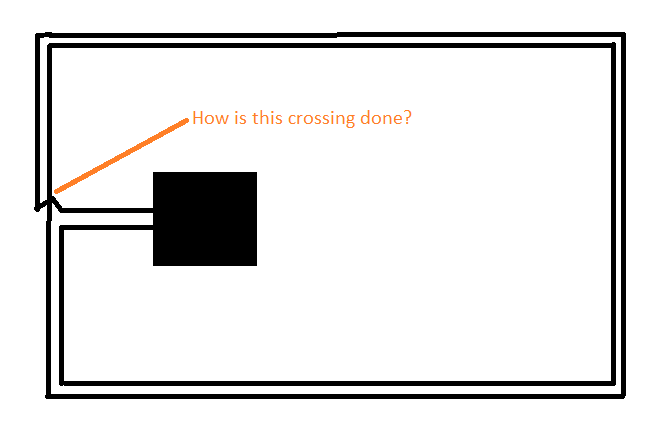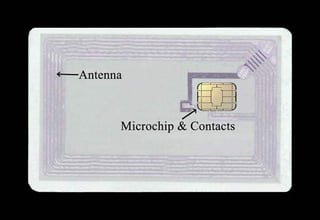Here's a typical layout of a wireless smart card. I simplified it as far as I could. The black filled rectangle is the chip. The black lines are wires comprising the typical concentric antenna layout. I only showed two turns because that's enough to show the problem.
The whole assembly is then covered with plastic and turns into a plastic card which has size of a bank card - about one millimeter thick. Obviously with any concentric antenna design fitting the antenna into a thin card requires that the most outer wire crosses the other wires at some point.
As the card is being normally bent antenna wires in this crossing will have to slightly move one over another and cause abrasion of each other unless some measures are taken. So I'd guess that if I just use magnet wire and let it cross itself and put all the assembly into plastic the wire will have its insulation work out in perhaps a year or two of normal card life and the antenna gets shorted.
How is this crossing done such that antenna wires insulation survives years in a card that is being bent often?



